Namibia is a unique and fascinating country. Attractions in Namibia range from prime wildlife safaris to fascinating desert landscapes, diverse culture and a whole lot of unpopulated places and wide open spaces in between.
The highlights of Namibia have taken millennia to reach their present state. Nowhere is the age of the earth more evident than in the ancient landscape of the world's oldest desert - The Namib Desert and of course the famous Sossusvlei. In Namibia, the layers of time are clearly marked and preserved: a dinosaur's footprints fossilised in rock; an ancient volcano worn by wind to its core; a 20,000-year-old meteorite; rock paintings over 26,000 years old; a river canyon 300 million years in the making. It took 5 million years for the dunes in the Great Sand Sea to get to their present state and they are considered young. Their petrified counterparts are over 20 million years old.
Despite its parched reputation, Namibia is one of the best wildlife safari destinations in Africa. Etosha National Park is a phenomenon unto itself. With a vast saline desert as its eye it is surrounded by tear ducts of natural springs that support an astonishing array of indigenous species. The Waterberg Plateau, Damaraland, Kalahari and Caprivi add fascinating and widely contrasting wildlife dimensions to complete the game viewing experience.
The people who inhabit this land, few though they may be, are no less captivating than their surrounds. San hunter-gatherers continue their ancient traditions in the area known as Bushmanland ; the Himba are nomadic herdsman with proud traditions who live in the remote and rugged Kaokoland and along the Kunene River. Coastal towns bear witness to the changing fortunes of an inhospitable shoreline. The ghost of a diamond-rush era remains in Luderitz; Swakopmund thrives despite its precarious location and shipwrecks along the Skeleton Coast reveal the source of its grisly name.
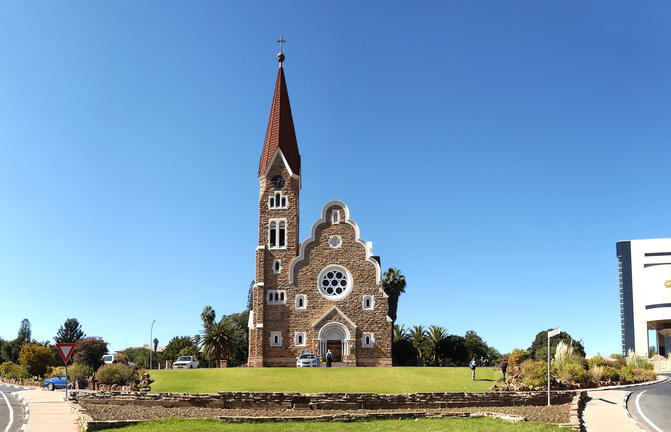
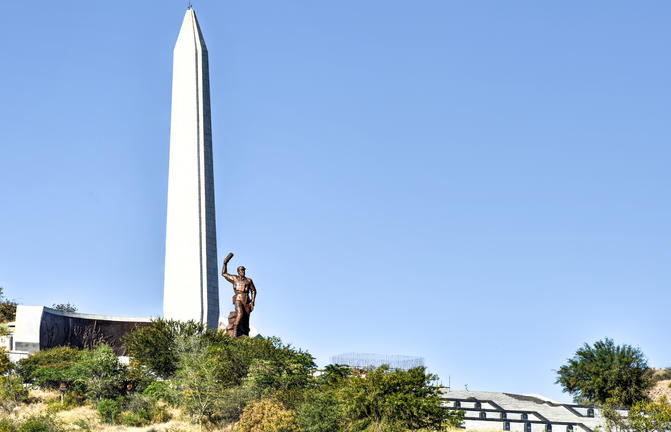


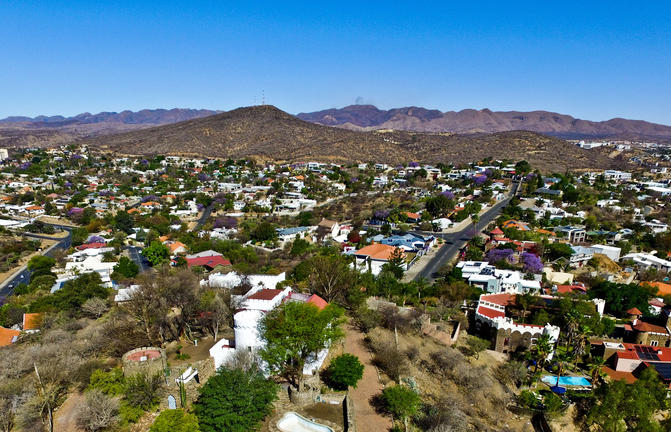
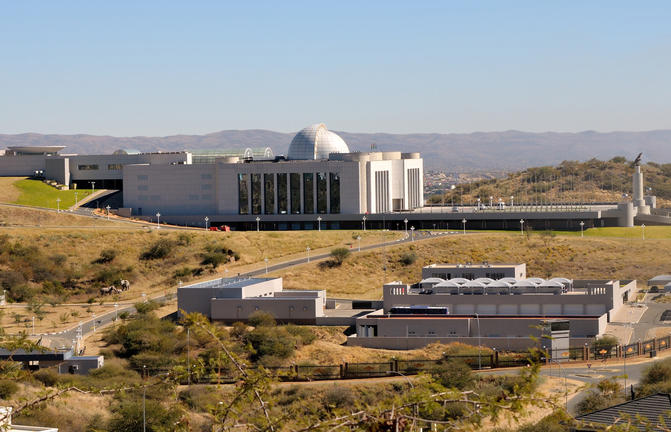
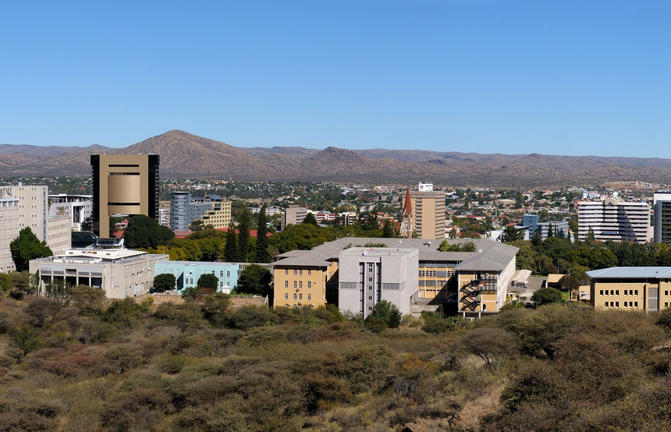
Surrounded by the stubble-covered Auas Mountains and the endless Khomas Hochland, Windhoek lies in a long valley fed by ancient hot springs in the central highlands. Namibia’s capital and bustling city. More often than not, the start or end place of your Namibia safari.
In Windhoek there are many interesting historical buildings, museums, galleries and craft shops. The city has several good restaurants and modern shops and services making it an excellent base camp from which to launch your Namibian adventure.
The Kalahari is a vast basin of semi-arid plains, dry savannah and moist woodland. Welcome to wide open spaces and ochre red sands.
In the southern Kalahari, attractions are few and very far between and that in itself is one of the major attractions of this endless land. Large camel-thorns and shepherd's trees dot the grassy plains and your field of vision may well cross a time zone with enormous skies and a chirrupy silence your only companions.
The semi-arid plains and dunes support diverse and fascinating plants, birds and animals that have adapted to life in a virtually water-free world. The gemsbok can go for months on end without water and have special blood-cooling systems at the base of their brains. The camel thorn is a large and hardy acacia tree that thrives in sandy soils thanks to a taproot that can extend to three times the tree's height.




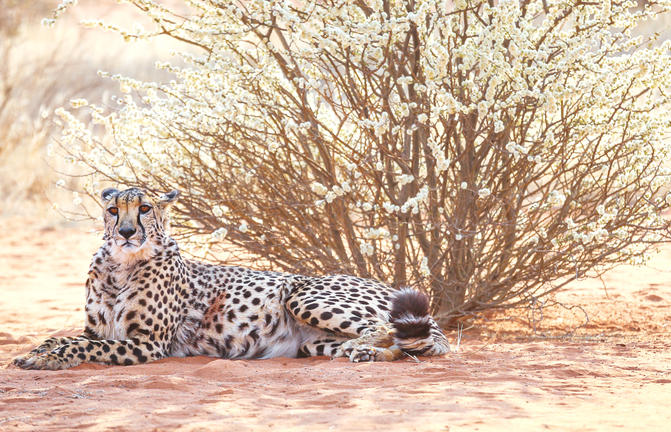
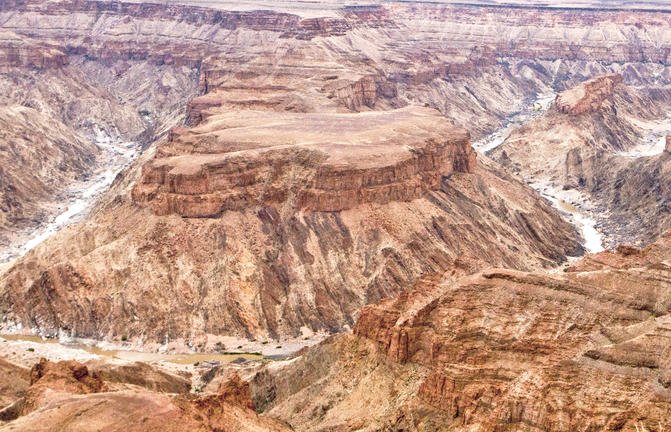
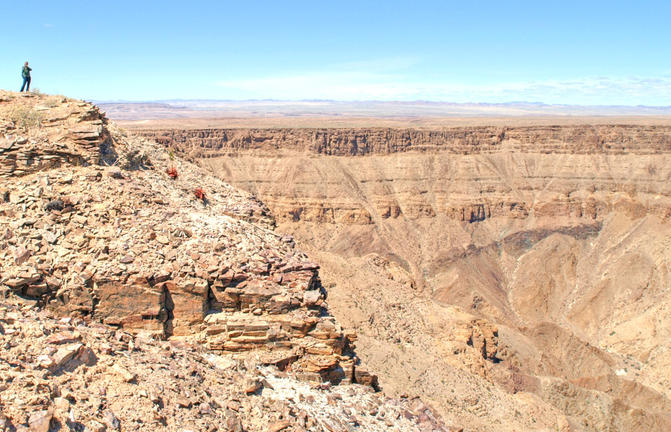
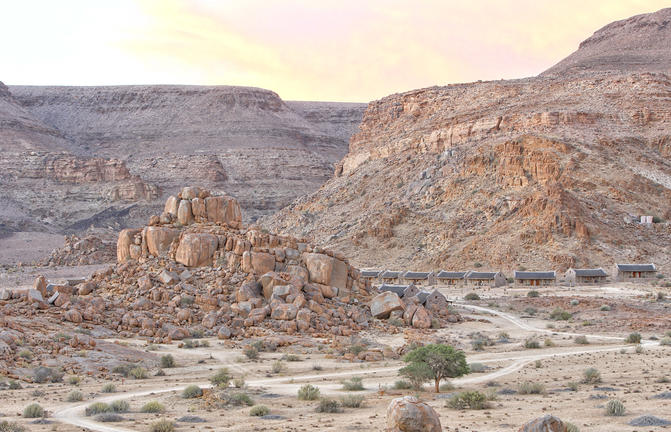
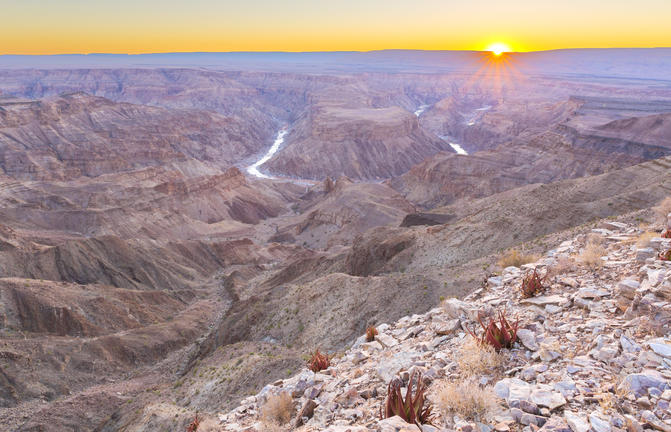
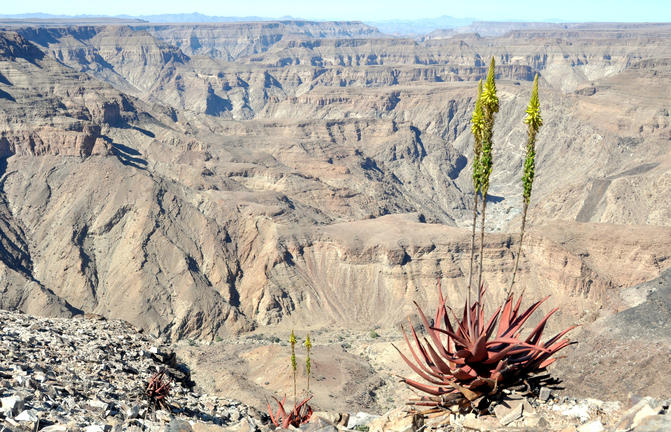
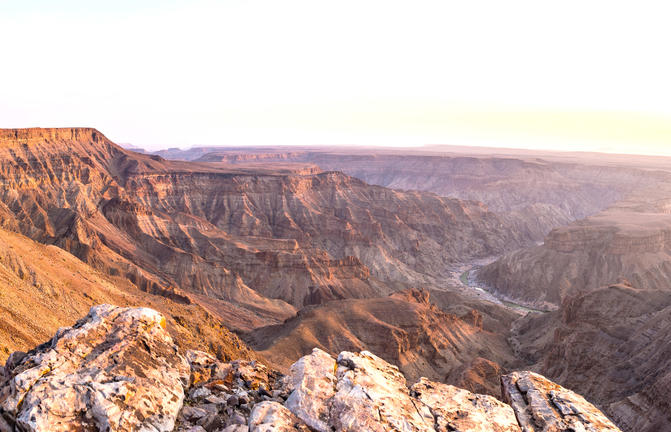
The major attraction in the southern-most reaches of Namibia is the Fish River Canyon. One of the largest in the world, the canyon proper is about 60km long, up to 8km wide, and 550m at its deepest.
The ephemeral Fish River - one of a handful that rise in Namibia - began its work creating the canyon in about 170 million years ago when tectonic rumblings increased the gradient of the river. All around the canyon, the land rises and falls in gentle undulations marked by dramatic inselbergs. Hardy wildlife thrives in the unspoilt wilderness of two adjacent nature reserves: Fish River Canyon National Park and the privately-owned Gondwana Cañon Park.
Luderitz is a harbour town on the Atlantic Coast in Namibia with 25,000 inhabitants. Born out of necessity in 1487 when Bartolomeu Diaz sailed his little flotilla into the natural bay it now boasts German history, excursions to Kolmanskop Ghost Town and off-shore activities.
Visit the abandoned Kolmanskop Ghost Town. An eerie feeling as you walk through deserted houses now filled with sand. Explore the old diamond mines and restricted areas of Pamona and Bogenfels rock arch. Be on the look out for crystallised stones known as the "Desert Rose". Go to Diaz Point. See the lighthouse or go on a boat cruise of the seas to explore the harbour. Search for the desert horses of Aus. The last true herd of feral horses in Africa.

















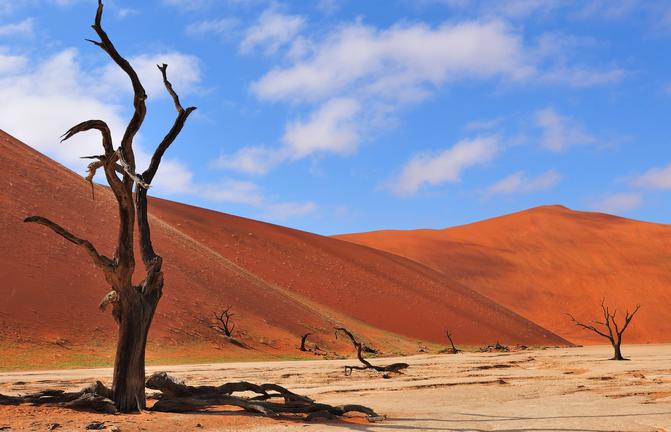
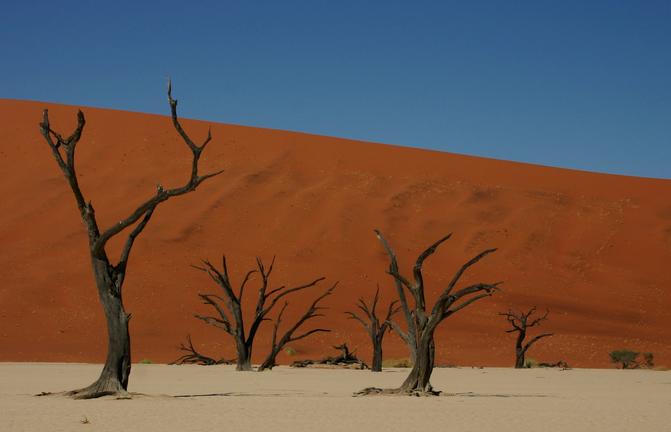

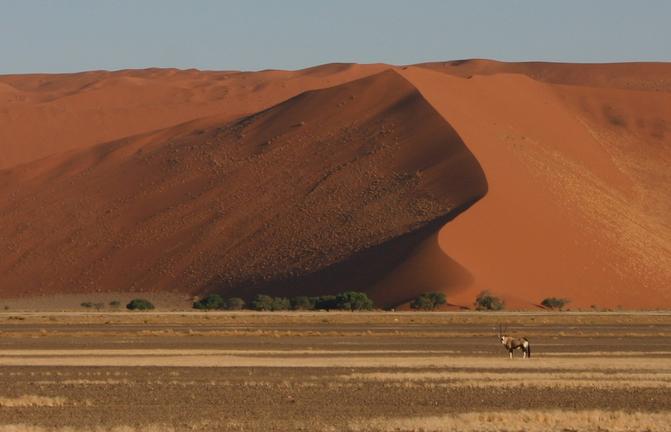

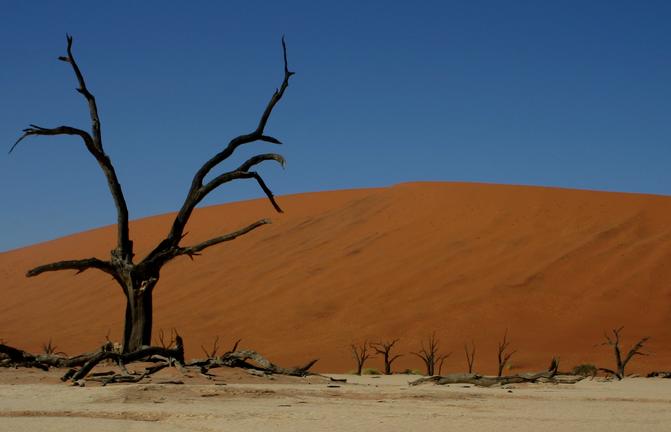
Star dunes with up to five crests rise 300m into the air and rank among the biggest in the world; the dune valleys are marked by vast clay pans where the Tsauchab River gave up its fight to reach the sea more than 60,000 years ago.
Besides the dunes and pans of Sossusvlei and Sesriem Canyon, a sideshow of activities and sights has developed around the region and there are plenty of game lodges that provide additional desert-adapted activities. Plants and birds are the dominant life form in this dessicated realm and they support a tiny world of mammals, reptiles and insects that, in the absence of coastal fog, seldom wander far from the rivercourse and its pans.
Surrounded by the ancient Namib Desert and the inhospitable - but bounteous - Atlantic Ocean, Swakopmund is alive with activity and has a lot on offer for the adventure-seeker: quad-biking, sand-boarding, horse-riding, skydiving and more.
Swakopmund has many interesting German-influenced buildings from the early 1900s in a variety of styles and, for its size, Swakopmund has an astonishing array of restaurants that serve mainly seafood, steak and many German staples.




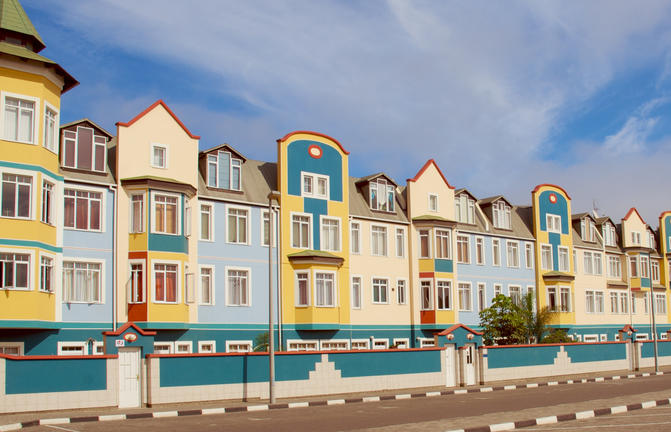
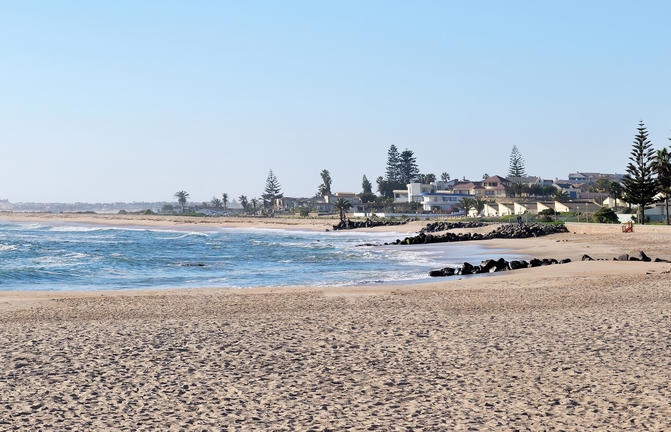
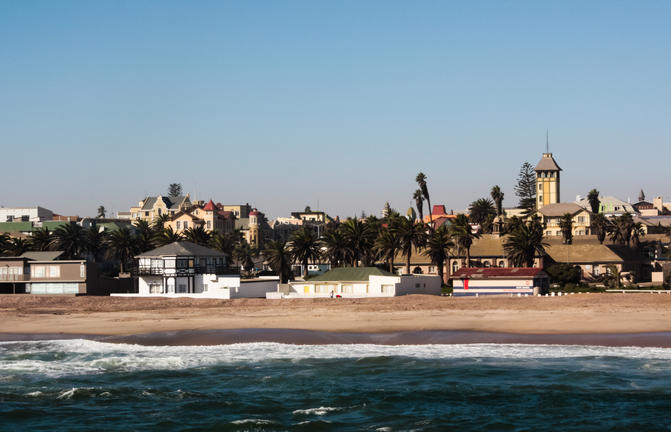
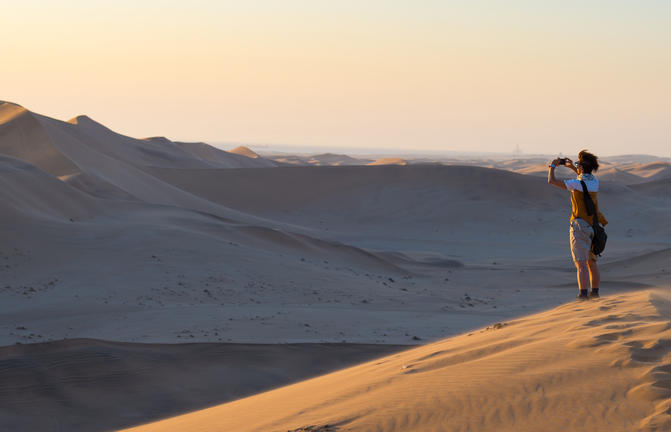
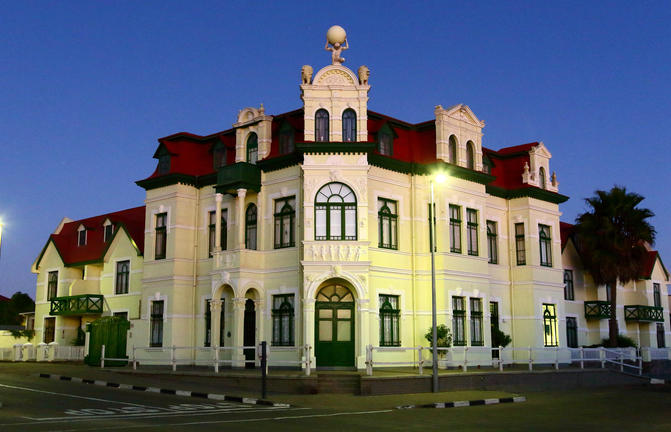
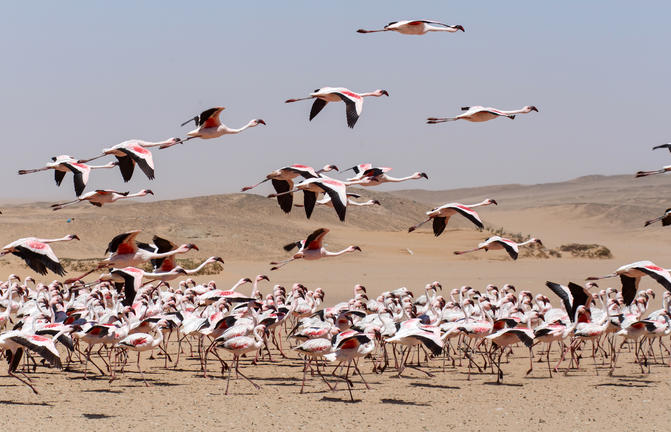
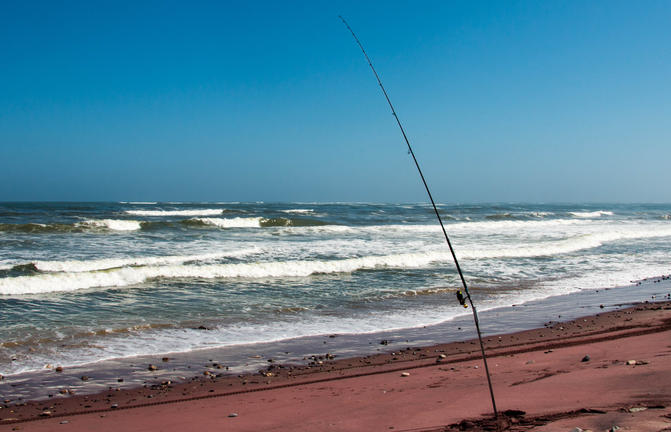
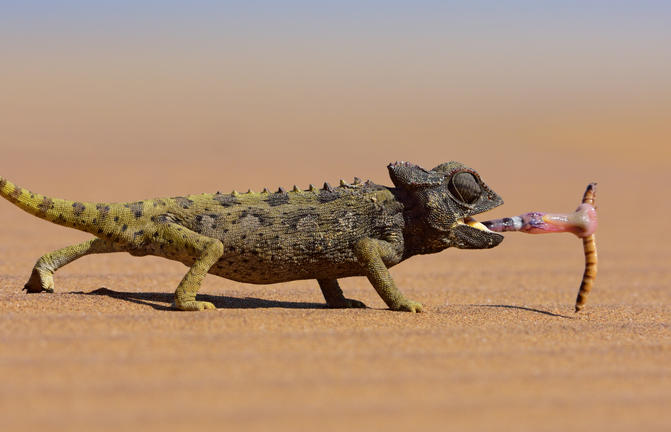









Walvis Bay is an industrial port which lies along the Atlantic Ocean, off Namibia's Skeleton Coast. The large bay and surrounding sand dunes help make Walvis Bay a tourist mecca with loads of activities on offer to explore it.
- Explore the Skeleton Coast where the dunes meet the sea at Sandwich Harbour
- Go on a dolphin boat cruise in the harbour. Enjoy champagne and oysters
- Kayak among the seals at Pelican Point
- Visit and climb the mighty Dune 7
- Visit the RAMSAR wetland birding site and the Walvis Bay Lagoon. Thousands of flamingos from October to April
- Explore the neighbouring town of Swakopmund. Activities abound and dining delights
Damaraland features vast khaki plains, sheer rocky mountains and incredible desert-adapted wildlife. Track rhino and desert elephant, explore the rugged land or sit back and enjoy the dramatic and endless scenery. Damaraland's hilly savannah supports a large number of species including lion, leopard, cheetah, hyena, eland, kudu, giraffe, klipspringer, steenbok, gemsbok and springbok. Birdlife is prolific with over 33 raptors recorded including cuckoo hawks, Egyptian vultures and peregrine falcons - the world's fastest animal.
Damaraland is divided into several enormous private game reserves, known as concessions, that support most species of Namibia's large game and provide some of the best birding and wildlife experiences in the country - and southern Africa for that matter.











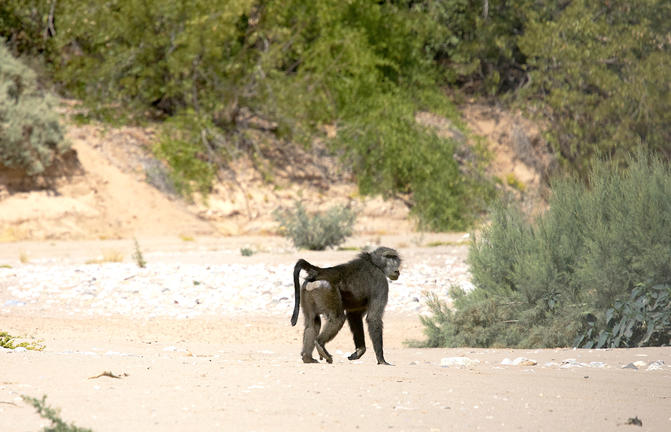

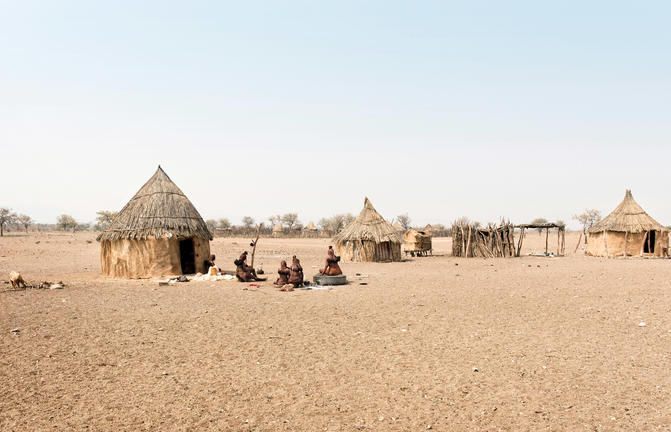
The Kaokoveld, a vast and empty wilderness occupying the north-western quarter of Namibia, is roughly divided in two by the Hoanib River. It’s harsh, remote, unpopulated and makes for some of Namibia’s finest scenic landscapes.
Kaokoland is a succession of hills and mountains punctuated by endless plains. This isolated rugged region is home to the nomadic Himba pastoralists who have remained unchanged for many generations. The attraction of Kaokoland lies in its wild and uncharted valleys and mountains. It is the most isolated and undeveloped region of this mostly isolated and undeveloped country.
Epupa Falls is on the Kunene River which forms the border between Namibia and Angola. Epupa means 'falling water' in the Herero language, its water cascading into a spectacular chute with a 60 metre drop and several natural rock pools where you can take a refreshing - and much needed - dip. Remote and wonderfully difficult to reach, is one of only a few waterfalls in Namibia.
If you’re visiting for a few days, you can pop off to the OvaHimba Village for a cultural experience. Don’t miss the opportunity to enjoy world-class birdwatching and spot an array of species including two of southern Africa's rarest birds: the Cinderella waxbill and the rufous-tailed palm thrush. Adventure-seekers can shoot the rapids in inflatable rafts on guided expeditions.












Situated in the western part of Etosha National park, a world-famous wildlife sanctuary in the northwestern part of Namibia, Etosha West is the wilder western region accessed through Galton Gate. Visitors to Etosha West can look forward to exploring the magnificent scenery of this remote north Namibian landscape characterised by lush undulating terrain and a reddish-brown soil, which is a stark contrast to the white dusty clay soil of Etosha East’s flat expansive plains. This area is home to several species not found in the rest of the park: baboons, Mountain Zebra, and Brown Hyena, as well as several unique plants. The area also boasts numerous waterholes attracting elephant, rhino, leopard, lion, a variety of buck, and around 300 bird species.
Located just south of the boundary of Etosha National Park in northwestern Namibia, Etosha South makes up the southern region of this wild paradise. The area is comprised of a collection of world class private game reserves. The national park can be accessed via the southern entrance at Andersson’s Gate. Visitors can catch a glimpse of a variety of wildlife including: lion, giraffe, elephant, white and black rhino, and a multitude of plains game. Popular activities include: enjoying an open 4x4 safari with an expert guide, half day or full day drives with the option of a picnic lunch with wine on the full day game drive.



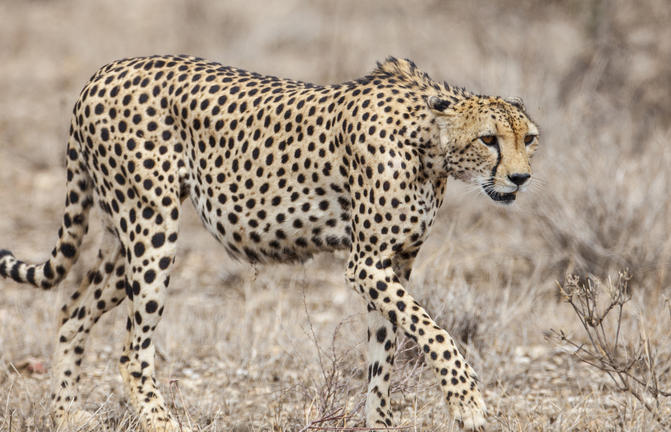
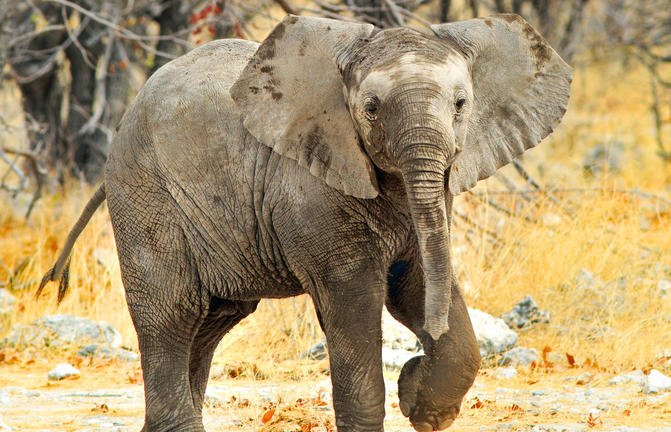
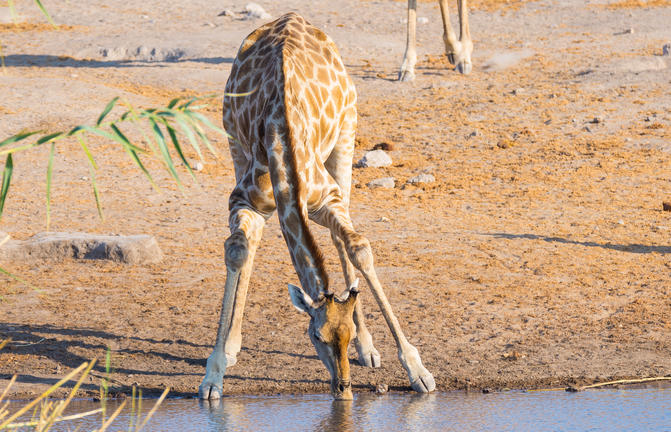
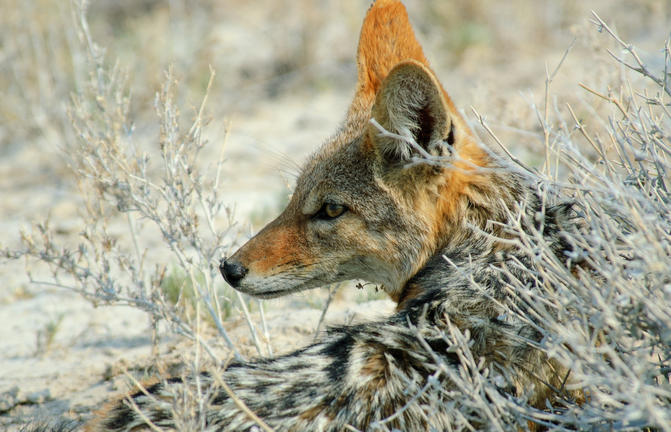
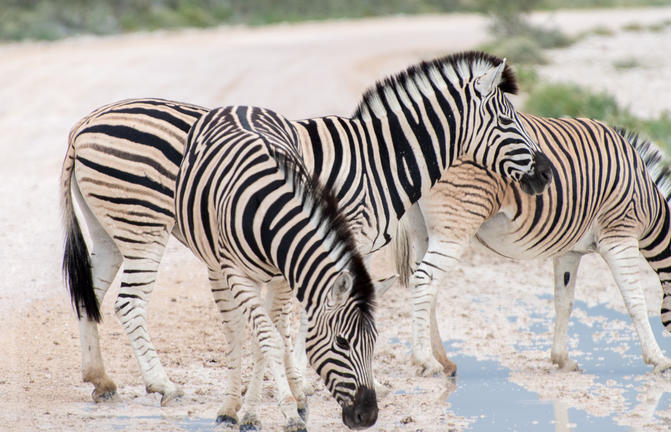
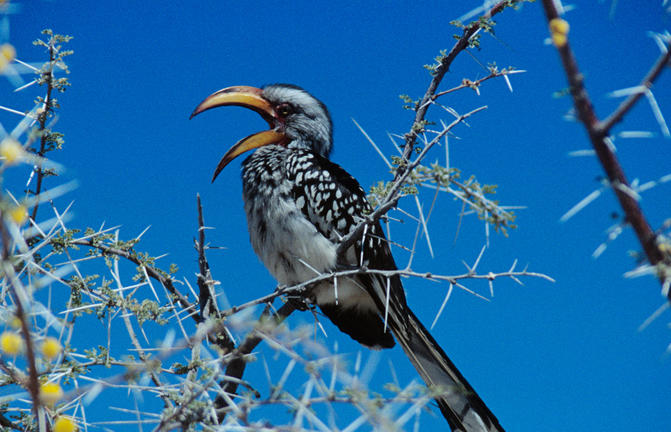
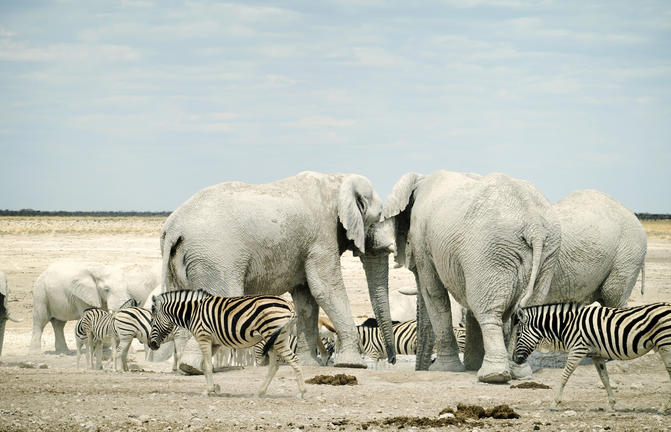






On the eastern edge of Etosha National Park, the park itself is bordered by numerous private reserves and access into the park is via the Von Lindequist Gate, named after Dr. Friedrich von Lindequist who proclaimed it a game reserve in March 1907. This side of the park is characterised by flat endless plains, tree-savanna type of vegetation and fantastic waterholes, where you could easily spot any of the prolific wildlife Etosha is known for. There's an abundance of wildlife here.
This 22,000-hectare private nature reserve is surrounded by the the Omboroko Mountains and the home of The AfriCat Foundation. AfriCat works to assist with the long term conservation and rehabilitation of carnivores like cheetah, leopard, brown hyena and that African icon, lion. Since 1993, over 1,000 predators have been saved with 86% released. Here you can see cheetah, wild dog and hyena in their natural home - leopards are radio tracked so you could get lucky and spot them too. 250 bird species think it’s an ideal spot and there’s a hide for watching nocturnal animals.












